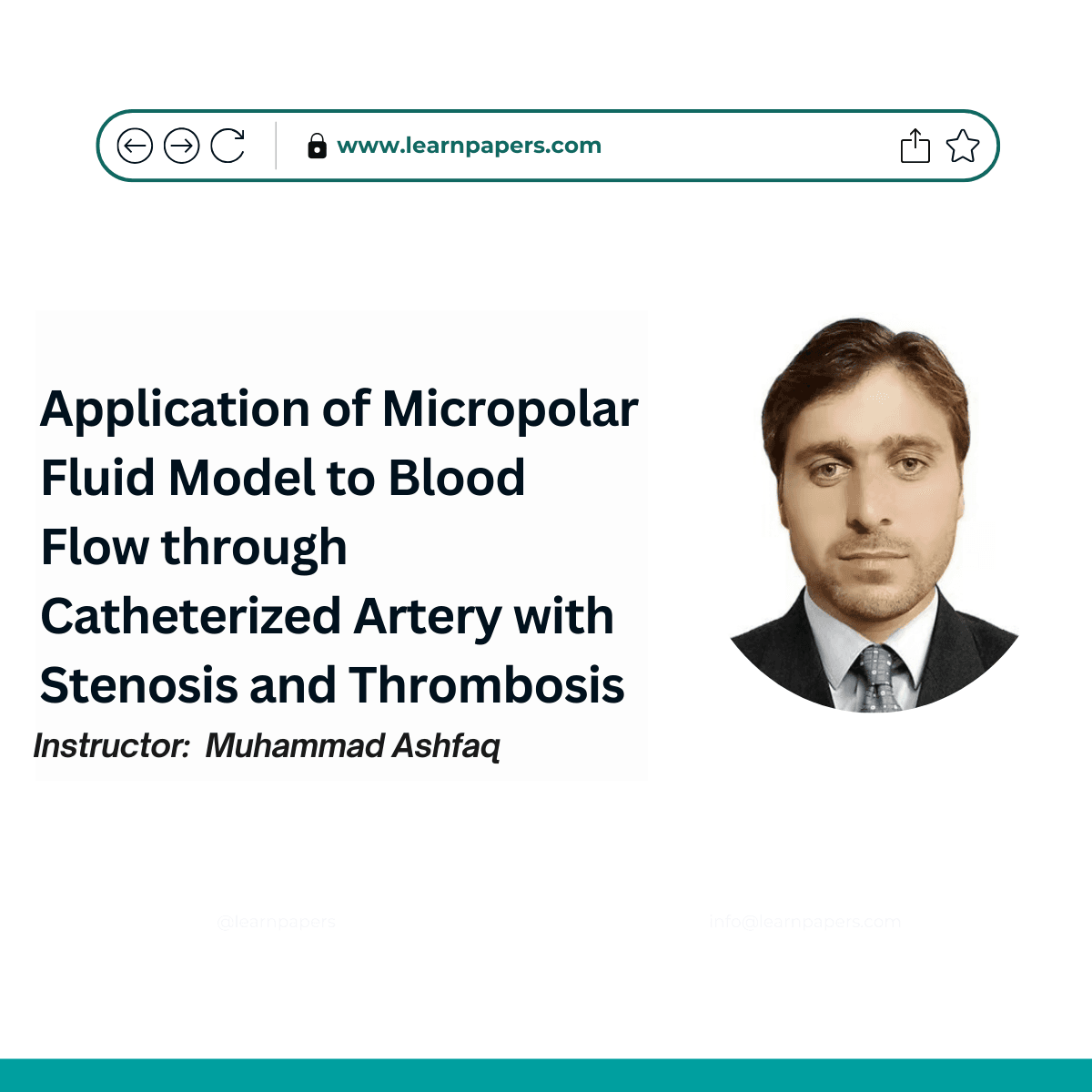Micropolar Fluid Model for Blood Flow Through Catheterized Arteries: Understanding Stenosis and Thrombosis

About Course
This course delves into the complex dynamics of blood flow through arteries, specifically focusing on catheterized arteries with stenosis and thrombosis. Using the micropolar fluid model, students will learn how blood’s rheological properties are influenced by stenotic and thrombotic conditions. The study also covers non-isothermal blood flow, emphasizing the impact of various physical parameters like velocity, temperature, shear stress, and resistance. The course uses mathematical formulations and validated numerical methods to explore these critical biological phenomena in biomedical engineering.
Students will also explore the innovative coupling of micropolar fluid mechanics with real-life medical applications, providing insights into improving medical devices like catheters. The course is designed for students interested in computational fluid dynamics (CFD), bioengineering, and medical physics, offering practical knowledge for solving challenging health problems related to blood flow in arteries.
Abstract:
This paper presents a comprehensive analysis of non-isothermal blood flow through a catheterized artery, taking into account stenosis and thrombosis. By utilizing the micropolar fluid model, the authors develop equations to describe blood flow and heat transfer in arteries. The model captures essential fluid characteristics, such as microrotation, that influence blood movement in constrained conditions. The study’s primary aim is to understand how these factors impact shear stress, wall resistance, and overall blood flow within arteries, particularly under disease conditions. The paper also explores the temperature and velocity profiles of blood, validated with the BVP4C approach, and offers detailed insights into the resistance to blood flow caused by blockages in the artery.
DOI:
Cite:
Course Content
Module 1: Introduction to Micropolar Fluid Model
Module 2: Stenosis and Thrombosis in Arteries
Module 3: Mathematical Formulation of Micropolar Fluid Model
Module 4: Non-Isothermal Blood Flow
Module 5: Numerical Solutions and Validation
Module 6: Impact of Physical Parameters on Blood Flow
Module 7: Applications of Micropolar Fluid Model in Biomedical Engineering
Module 8: Practical Case Studies
Student Ratings & Reviews
